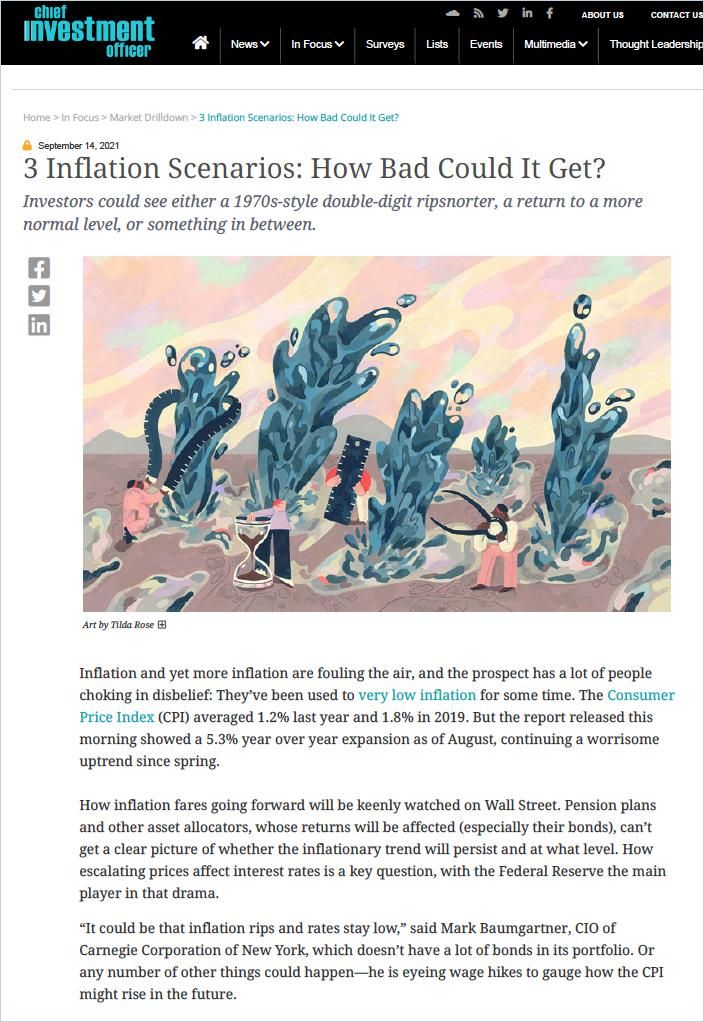Employee Retention: More Is Now More (Again)

It is rare that all observers and analysts agree, but when looking at the reasons for the so-called “Great Resignation” in 2021 and 2022, this is largely the case: For the first time in decades, American workers have more power in the labor market than employers. Now, the latter are desperately seeking qualified personnel and must constantly replace departures. And they’re asking themselves: What’s the best lever for retaining the best employees and attracting new talent at the same time?
There are increasing signs that a good corporate culture, hip offices and plenty of “purpose” are not enough to compensate for salaries that are rising too slowly. Alarm bells are ringing in many HR departments.
The balance of power and the economy is shifting towards workers.
Josh Bersin
From the outside, one must conclude: Companies struggling to fill positions in the United States usually have failed to keep pace with changes in the job market during recent years. The current employee shortage has materialized, particularly, in companies that fail to meet salary expectations.
Related Summaries on getAbstract.com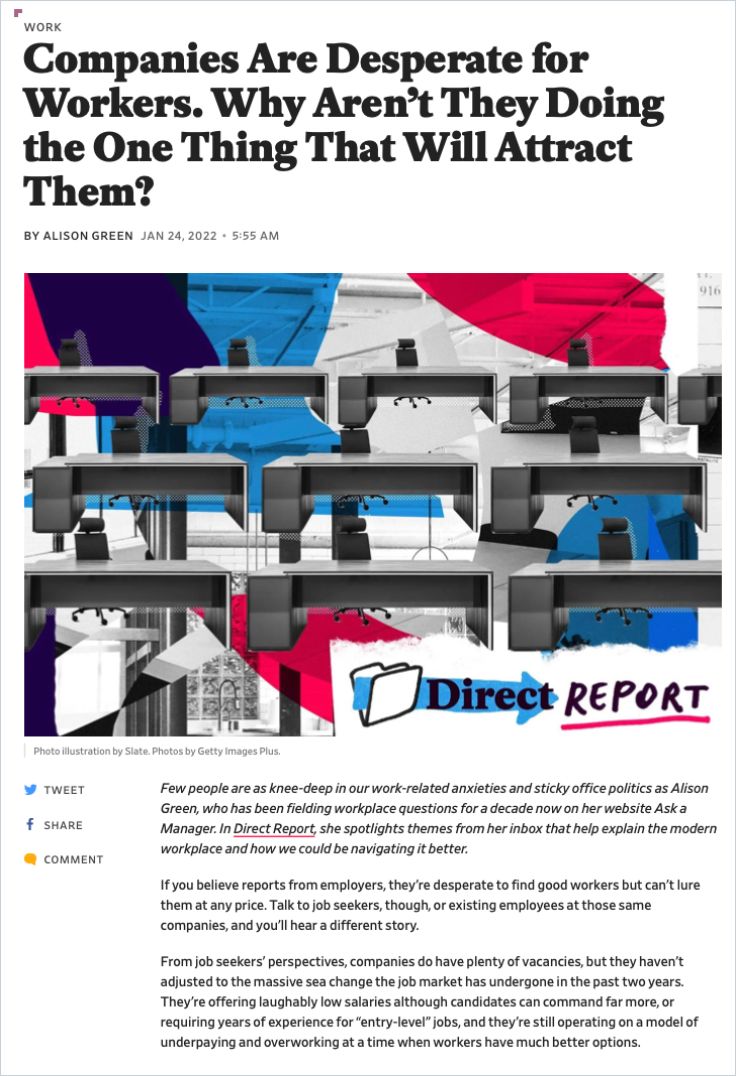
Drawing on anonymous, first-hand accounts from frustrated job hunters, Alison Green of the funny and unvarnished work advice blog Ask the Manager has collected plenty of stories of recruiting fails that seem almost absurd. One job applicant reported an encounter with a company seeking an experienced professional in a specialized field for a salary of $17-$18 per hour. The position, the potential candidate added, was in-person and in a high-cost of living area. Unfortunately, that’s not what one would call an isolated case:
Employers are still operating like they did a decade ago, without considering how they might need to change – to raise offers, increase benefits and generally make themselves a more attractive place to work.
Alison Green
Keeping Pace with the Economic Environment
The first thing you should do when thinking about your company’s compensation structure is: Think outside the box. Because your company exists in a specific place, time and industry. When the framework conditions change, you have to react – and not just a few years later.
Currently, there are good macroeconomic reasons for salary increases, and these realities must be reflected in HR action programs or their job offers will be ignored: The U.S. inflation rate is around 8% in 2022, which means that all salaries not previously raised by at least 8% are now de facto shrinking because your employees can afford less for your pay.
People feel it: Rising prices for energy, food, commodities and, especially, rents are putting them under pressure. Although the inflation rate is expected to decline further in the coming months, your HR department is forced to react because a return to rates as low as in recent years is improbable. Here’s why:

What’s at Stake for the Global Economy as Conflict Looms in Ukraine
The New York Times Read Summary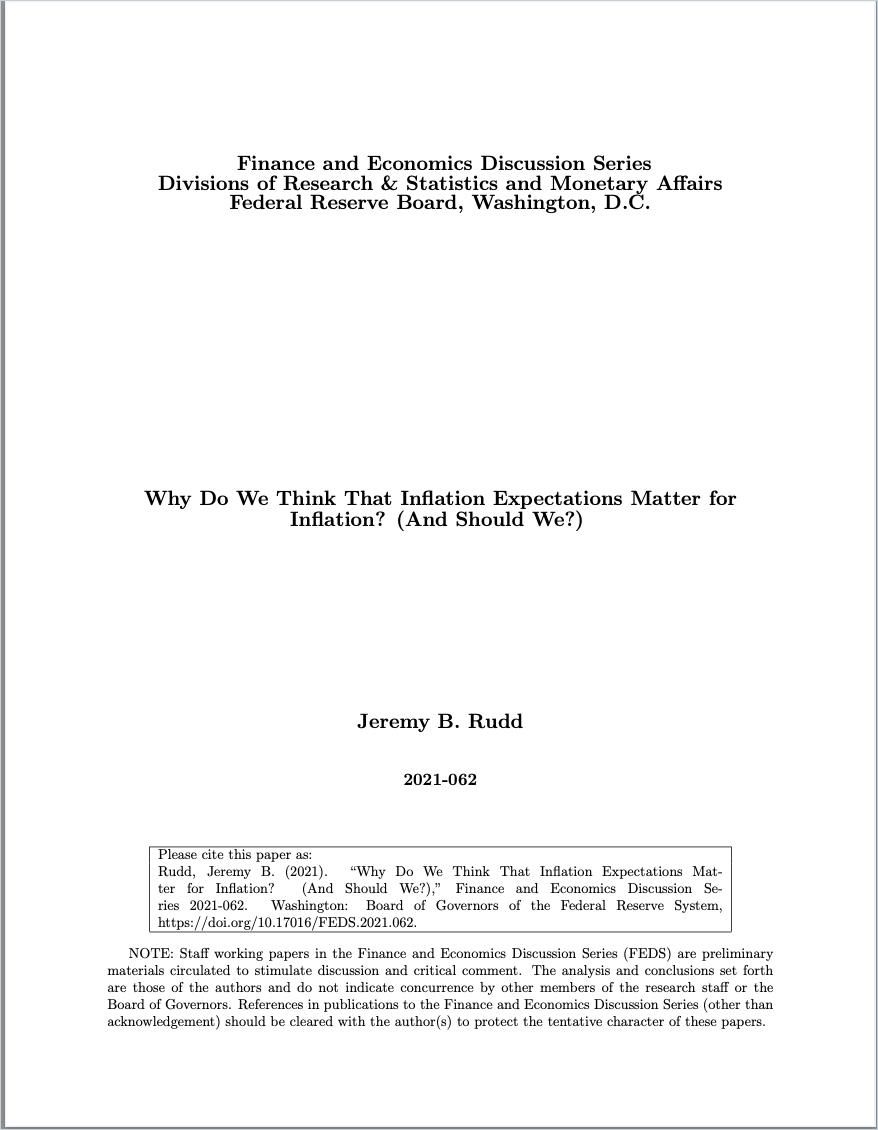
Why Do We Think That Inflation Expectations Matter for Inflation? (And Should We?)
New York Fed Read SummaryPaying more is therefore not just a nice thing to do, but a commonsense imperative if you want to retain and recruit people. Employees who earn less each month will be hard to motivate to perform better even with non-monetary incentives – at least over a longer period of time.
“Taking action might be a differentiator in winning the war for scarce talent – doing nothing as an employer cannot be the answer,” writes Christoph Thoma from EY. But he adds: “Matching the planned salary increase of their workforce with the local inflation levels is, firstly, not sustainable and, secondly, very costly.” No wonder, “some companies are contemplating a one-off payment for their entire workforce to counteract high costs of living.” It’s essential here, Thoma writes, to make clear that “there is no entitlement to receive the same again next year.”
So, instead of simply spending more everywhere according to the watering can principle, you should take a fundamental look and see whether your payment strategies are still in line with the times. Because the “right” pay for your company today is no longer the most cost-effective accepted job offer.
Consider Six Compensation Principles
In recent years, many companies have adapted their systems to the new conditions – and are therefore successful in the job market. They are meeting the new needs of employees, but are relying on “the right mix” of monetary and other incentives. In Fair Pay, compensation insider David Buckmaster examines how organizations determine pay for their workers, and how to enhance pay equity. The book deserves a spot on every employee and HR bookshelf by providing an illuminating discussion of what constitutes fair pay and a living wage.
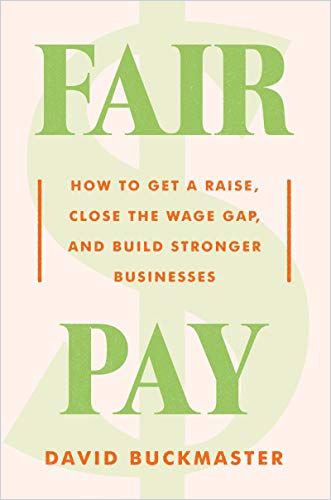
Buckmaster explains that:
- Unfair pay arises intentionally and unintentionally.
- Double-digit gaps persist in pay between genders and races in even the most progressive countries and firms.
- Fixing unfair pay proves almost impossibly tricky, at least in the short term.
Yet, in pioneering “fair pay” companies – among many differences – these six principles can be found regularly and have been proved fruitful when adjusting salaries to be more competitive on the job market and retaining talent at the same time:
- Fairness – Let’s face it, there is no such thing as an objectively “fair” wage. Everyone feels differently about what is fair. New Pay companies strive to determine wages in a way that is perceived as fair by employees.
- Transparency – Pay sincerity demands pay transparency – the ability for employees to compare their pay to that of their peers. It means eliminating the information asymmetries that put employees at a disadvantage in knowing whether their employer pays them fairly.
- Self-responsibility and participation – Employees have a say in deciding on salary and the salary system.
- Flexibility – Compensation also includes intangible components such as free time, freedom of choice and a sense of purpose. Employees can choose what they prefer at any given time.
- Common goals – Link salary components to the achievement of common goals, such as customer satisfaction. Bonuses are paid out to everyone, either as a lump sum or depending on the base salary.
- Permanent beta – Salary determination should fit the company, so it must change with it. Working on the salary concept is a process, and failure is a learning opportunity.
The Downside of “Agility”
With the shift to more agile ways of working, many employees are given more responsibility without it being reflected in their salaries: They are now leading teams or even groups of teams (often virtually, which requires special skills) but they can’t prove this responsibility with a new job description that reflects this or by climbing a visibly higher rung on the hierarchy ladder.
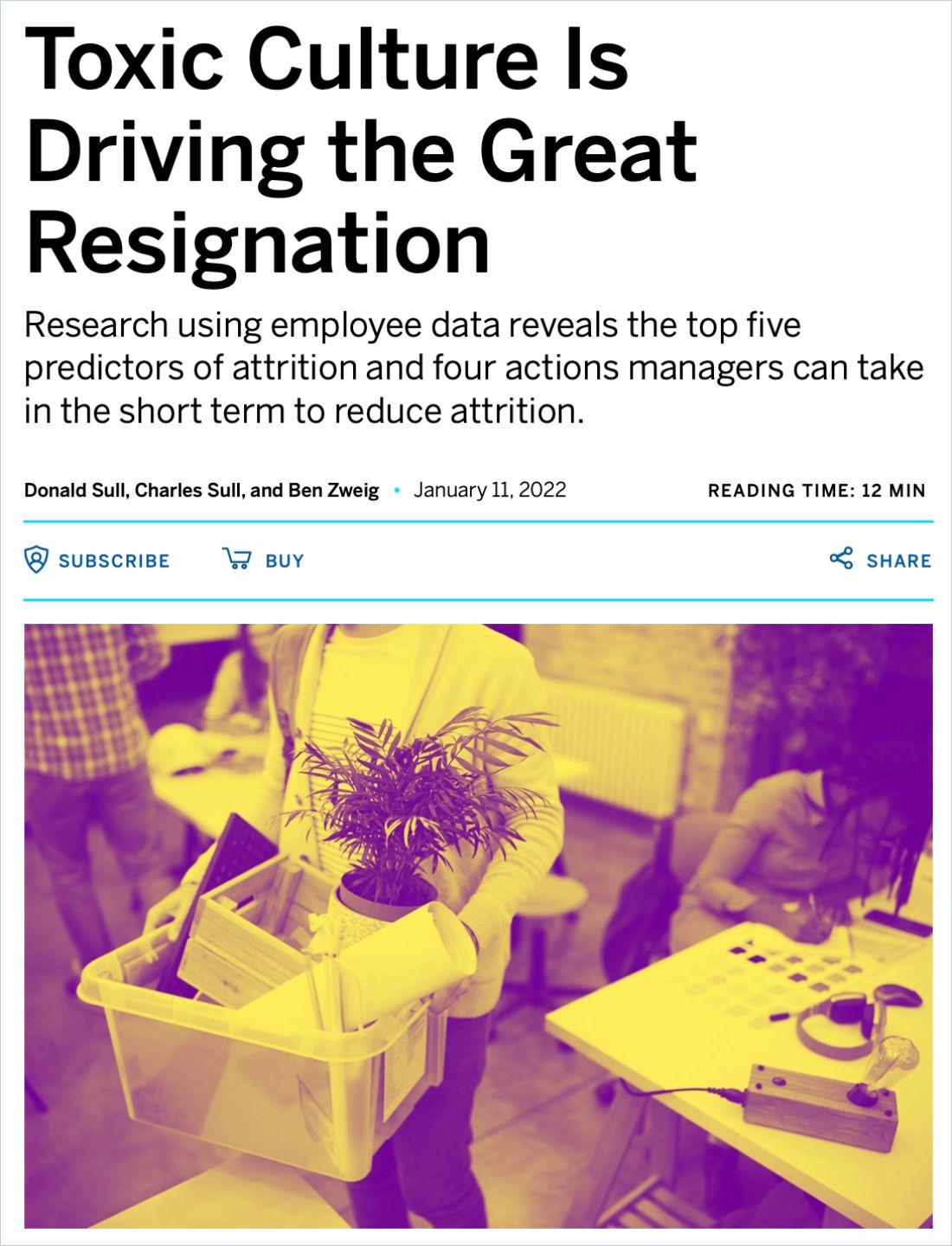
Toxic Culture Is Driving the Great Resignation
MIT Sloan Management ReviewThis puts them under extraordinary pressure: They try to justify themselves to team members, have a growing duty of care but no evidence of it on their CVs, and no upswing in salary to make their position palatable. The effect: They often wear themselves out without benefits, their motivation drops – and, in the end, they either change employers or refuse any further responsibility in the future.
In other words, they do exactly what companies don’t want them to do.

To be agile and fair at the same time, the following salary determination systems from actual practice can help:
- Role-based pay – This motivates employees with a fixed amount to take on a specific task or role. Share or profit distributions also have a motivating effect. So if you distribute responsibility, you should also distribute corresponding compensation in the future.
- Self-selected salary – In some pioneering companies, employees can determine their own wages, provided there is the appropriate transparency in the company. However, justifying their decision through performance can put them under pressure. At the German industrial consultant Vollmer & Scheffczyk, the free choice of salary has tended to lead to moderation, because employees decide with consideration of the salary and feedback from their colleagues. The chance that they will reach a specific salary also depends on the wishes of others and the business situation. This increases the incentive for joint effort.
- Minimum salary – A salary that is easily enough to live on is high, but it offers employees security – and gives even shy negotiators the opportunity to earn more. If everyone gets the same basic salary, but you can move up from it by taking on more responsibility, there is security, but there are also strong incentives to perform better. Don’t believe us? When, in 2015, Dan Price, CEO of Gravity Payments, raised his employees’ minimum wage to $70,000 per year – and reduced his own salary from $1 million to $70,000 – pundits expressed admiration, but predicted the quick demise of his company. By 2020, Gravity Payments’ revenues had grown by 200%.
- Salary formulas and salary calculators – Instead of salary negotiations, employees find out how much they earn based on defined and weighted criteria. This system ensures that many “old habits” – that is, what you have been “with” for decades – can be cut off. This increases productivity, is transparent and frees up more resources that can be better allocated. At the same time, this can lead to real hardships in the company.
As a general rule, what works for one company may not work for another. It is best to try a mix of the above systems that are tailored to your needs – pilot projects in individual departments may also be worthwhile.
As a guide, industry expert Josh Bersin states:
Competence, ethics and listening have to take a priority in every conversation, every decision, every project, every relationship that we have at work.”
Josh Bersin
Now, this all sounds like you can’t pay enough for your people. And in a certain sense, current studies even prove this statement right.
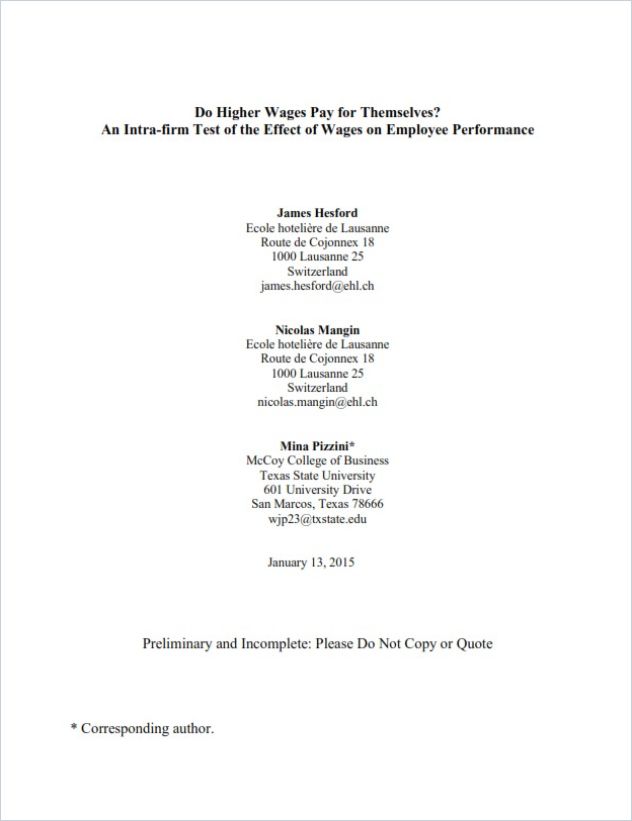
Actual field data on the pay and productivity of general managers at 490 hotels in a US lodging chain answered three questions:
- Do higher wages lead to better performance? – Under measures such as customer satisfaction, revenue and profits, managers’ performance improved as wages rose. Minor bonuses made little impact on motivation, making it likely that “higher performance is the result, and not the cause, of higher wages.”
- Is the relation between performance and wages the same when workers are overpaid versus underpaid? – Highly paid managers demonstrated the same or greater productivity increases as lower paid managers when wages rose.
- Do the overall benefits of paying higher wages outweigh the costs? – Every $1,000 increase in a general manager’s relative pay yielded a profit gain of $1,080 on average. In addition, higher pay led to greater customer satisfaction and lower employee turnover.
Find more advice in getAbstract’s remuneration Channel:


